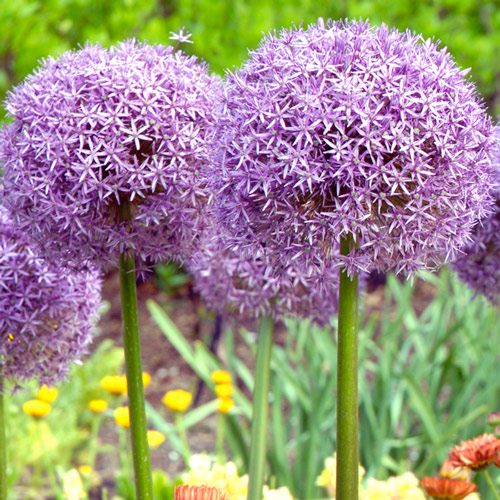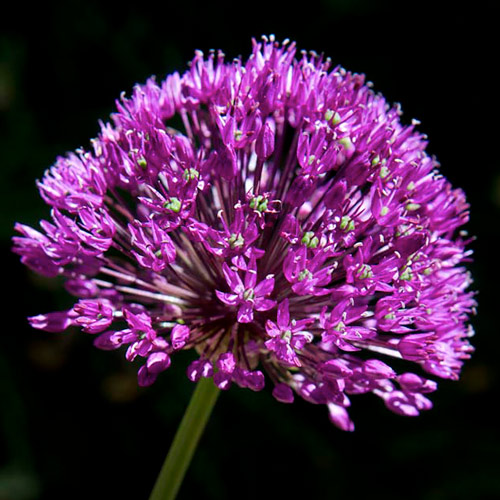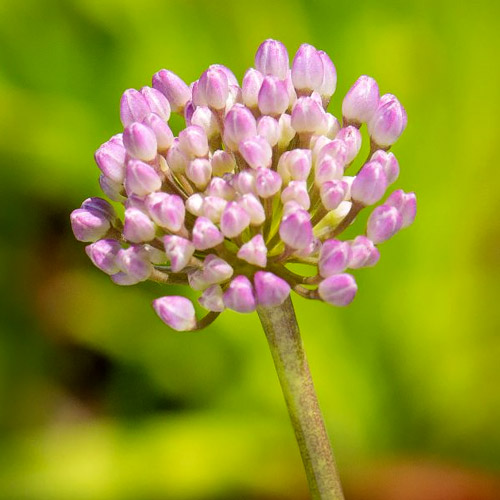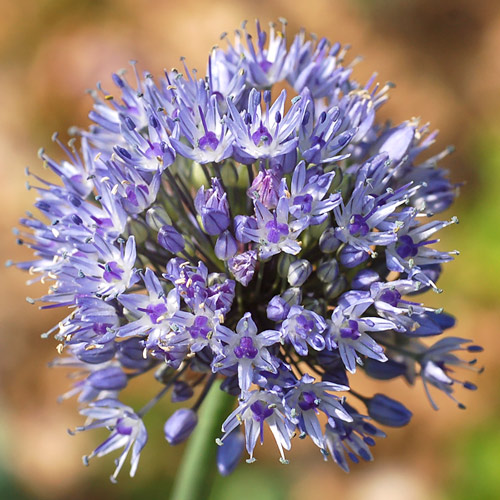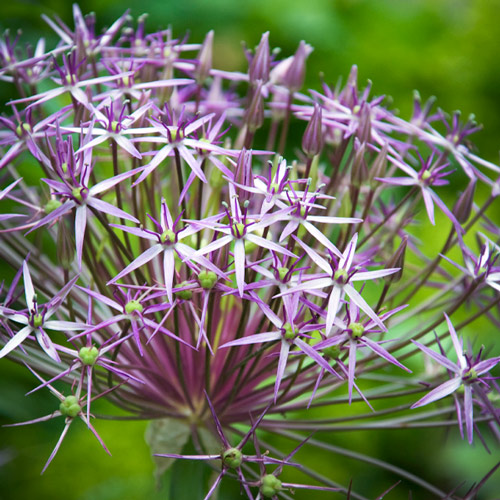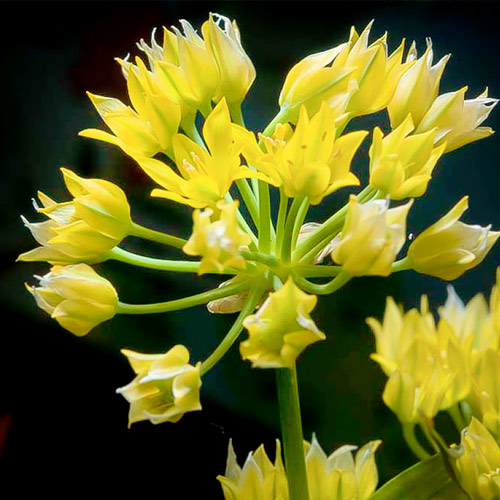

Alliums
Allium spp.
There is something wonderful about a plant that gives you color, pizzazz, longevity, reliability, and style. Many varieties of the ornamental onion (Alliumspp.) do all that, and more: they brush the mixed border with an artistic touch, dotting the garden with statuesque, floral sculpture.
Spring bulbs are beloved for their brilliance and promise of renewal. The tulips, daffodils, squill, grape hyacinths, and dozens of smaller bulbs, start the growing season with a colorful hurrah! Lilies pick up the bulb show later on, with Asiatic lilies the first to show their saturated open faces and Orientals (if they are fortunate enough to survive the rabbits) coming later in summer, broadcasting fragrance and elegance in spite of their splotches and speckles. In between all this action are the alliums, bridging spring and summer with a surprising array of color (purple, yellow, blue, pink, and white), height and flower shape (golf ball, tennis ball, baseball, softball, or the diminutive bells).
Alliums in your Garden
Planted in fall, at the same time you dig the ground to pop in tulips and daffodils, most allium bulbs have little problem with our cold winters. A few types might be considered “annuals,” especially if you garden in heavy clay. Alliums are native to sandy, dry soils with excellent drainage—Siberia, eastern Europe, Turkey, and the lands once known as Persia. As gardeners in Chicago have learned, good drainage has a positive effect on hardiness and can bump up a plant’s chance for that coveted “reliable return.”
Alliums have earned extra points lately due to their wildlife resistance. As members of the onion family (the ornamental, not the edible side of the family), they are shunned by rabbits, squirrels, chipmunks, and other animals. Some cautious gardeners weave allium and daffodil bulbs throughout their lily beds as a protective barrier around the more desirable lilies in an effort to outfox the fox.
Allium Blooms
Allium flowers are long-lasting and attractive, whether left fresh or dried on the stems, cut for indoor display or not. They attract butterflies, do not smell like onions (although the foliage and bulbs often do), and, when happy in their full-sun, well-drained site, can form colonies or self-seed, especially when some of the more humongous flower heads are left on the plant, creating a startling, dried flower arrangement in the middle of an otherwise verdant garden.
Big
The largest flowers belong to Allium ‘Globemaster’. At 10 inches across, they are often cleverly advertised next to a smiling child’s face. Guess which is larger? For a big, round purple softball on a 4- to 5-foot stem, try a small army of ‘Gladiator’. They perform best at the back of a border or against an open fence, where they can receive a bit of protection from strong winds.
Popular
Allium aflatunense ‘Purple Sensation’ is a smaller-sized variety more suited to average gardens. Depending on the weather, they will appear between April and May, like splendid royal purple lollipops sprouting between clumping perennials, daylilies, ground covers, or anywhere there's a good green bed to hide allium’s inevitable yellow foliage. Honeybees love the nectar produced by the flowers that last for weeks, and the strong onion smell of the crushed stems and leaves discourages deer and rabbits.
Tough
Hundreds of small, round, purple-pink flower clusters bloom in midsummer on the balloon bouquet ornamental chive, Allium tanguticum 'Noneuq'. This hardy onion relative with a compact growth habit and broad strap, shaped, blue-green leaves grows to about a foot in height and about 8 to 10 inches wide. Unlike edible onions, the root system is a rhizome, not a bulb, and adapted to the clay soil found in many Chicago-area gardens while retaining foliage throughout flowering.
Cool
Gardeners looking to add a splash of cool hues with less drama might consider the true-blue Allium caeruleum (the latter means "blue" in Latin). Their silver-dollar-sized blooms are held well above their foliage and appear at the convenient late spring to early summer period. The Litvinov onion, A. litvinovii offers dense globes of deep violet-blue florets around the same time in May to June. It prefers a sunny spot with well-drained soil, and is deer resistant.
Star
Allium christophii, the stars of Persia, is a most unique flower. It grows only from 1 to 2 feet (keep in mind that the diameter of the flower head can be between nine and 12 inches), in an airy, open, explosive kind of manner. The amethyst flower heads will self-seed, especially in sandy soils. Blooming between May and June, it serves as a head-turner when stuck at regular intervals in the front of the border, not unlike the effect of Allium schubertii.
Gold
For those who prefer a small, star-shaped, yellow flower, the golden lily leek, Allium moly, is a more demure, suitable choice. Its bright blooms sit on 4- to 6-inch stems above lax, broad-leaved foliage, as it appreciates rich, well-drained soil in the late-summer sun. Bruised foliage and flowers smell strongly of onions, which may explain why this plant is avoided by deer and rabbits; however butterflies are strongly attracted to the nectar.


